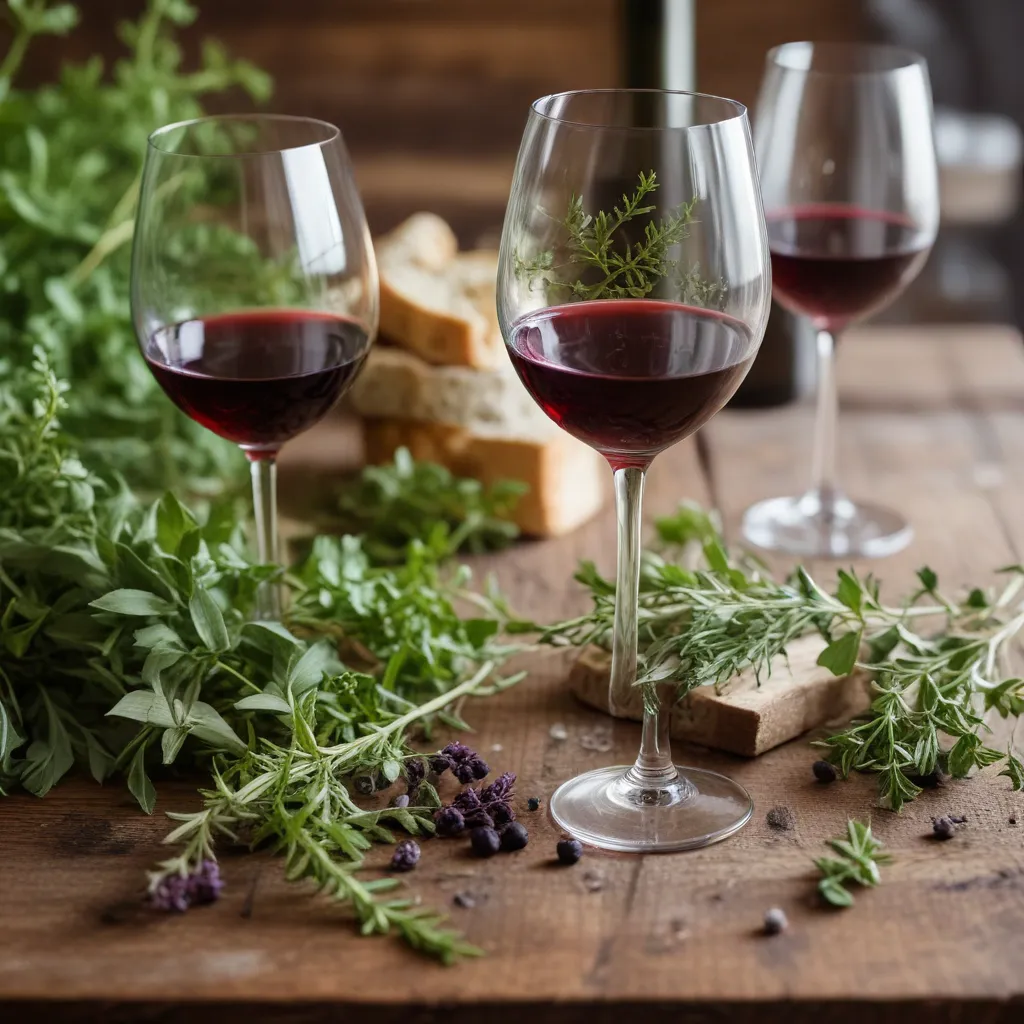
Pairing Wines with Seasonal Foraged Herbs: A Culinary Exploration
In the captivating world of wine and cuisine, there lies a harmonious dance between the flavors of the vine and the bounty of the land. As we delve into the realm of seasonal foraged herbs, we uncover a treasure trove of culinary delights that, when paired with the right wines, can elevate the dining experience to new heights.
Seasonal Foraged Herbs
The humble herbs that grace our gardens and wild spaces possess a remarkable versatility, both in the kitchen and on the palate. From the delicate fragrance of rosemary and the herbaceous notes of thyme to the peppery punch of arugula and the floral notes of lavender, these seasonal foraged offerings are a testament to the richness of our natural world.
Foraging practices, when approached with sustainability in mind, allow us to responsibly harvest these botanical gems. By understanding the life cycles and growth patterns of these herbs, we can ensure that our culinary explorations do not compromise the delicate balance of our local ecosystems. Moreover, the nutritional benefits of foraged herbs, from their high vitamin and mineral content to their potent antioxidant properties, make them a valuable addition to any wellness-focused diet.
Pairing Wines with Foraged Herbs
The flavor profiles of foraged herbs can be as diverse as the wines themselves, from the earthy and savory notes of wild mushrooms to the bright and citrusy overtones of lemon balm. When it comes to pairing these herbal delights with wine, the possibilities are endless.
For the delicate and floral-forward herbs, such as chamomile and violet, a crisp and aromatic white wine like Riesling or Gewürztraminer can be a harmonious match. The wine varietals that excel in herb pairings often possess a balance of acidity, fruit, and subtle herbaceous undertones, allowing the flavors to intertwine seamlessly.
Heartier herbs, like rosemary and thyme, can find their perfect complement in the robust and structured tannins of a Cabernet Sauvignon or a Syrah. The savory and earthy notes of these herbs can help to soften the wine’s tannins, while the wine’s bold flavors can amplify the herbaceous notes.
The Art of Flavor Pairing
The key to crafting a truly remarkable herb-wine pairing lies in the delicate dance of balancing flavors. Whether you’re seeking complementary or contrasting profiles, the goal is to create a synergy where the sum is greater than its parts.
For complementary pairings, consider the way the wine’s fruit or mineral notes can enhance the natural flavors of the herbs. A bright and citrusy Sauvignon Blanc, for instance, can be a delightful companion to a salad featuring fresh lemon verbena and edible flowers.
In the realm of contrasting flavors, the interplay between the wine’s acidity and the herbs’ bitterness or astringency can result in a captivating culinary experience. Imagine a glass of earthy Pinot Noir paired with a roasted beet salad garnished with peppery watercress and a drizzle of aged balsamic vinegar.
Enhancing Culinary Experiences
The marriage of foraged herbs and wine extends beyond the dinner table, spilling over into the realm of herb-infused cocktails and herb-crusted meats and fish. By infusing wines, spirits, and even vinegars with the vibrant flavors of seasonal herbs, we can create truly unique and memorable drinking experiences.
Likewise, the use of herb-crusted proteins, such as a pan-seared halibut with a rosemary-thyme crust, can elevate the dining experience by seamlessly integrating the earthy, aromatic notes of the herbs with the richness of the seafood or meat.
Foraging and Gastronomy
The rising popularity of farm-to-table movements and locavore dining experiences has shone a spotlight on the importance of foraging and the utilization of seasonal, locally sourced ingredients. This connection between the land and the table has not only ushered in a new era of culinary exploration but has also sparked a deeper appreciation for the sustainability of our food systems.
By incorporating foraged herbs into our culinary creations, we not only celebrate the bounty of the land but also contribute to the preservation of our wild herb populations. Through ethical harvesting practices and a commitment to responsible foraging, we can ensure that these botanical treasures continue to flourish for generations to come.
Exploring Herb-Wine Synergies
As we delve deeper into the world of herb-wine pairings, we uncover a tapestry of herbaceous and floral wine profiles that lend themselves beautifully to these culinary explorations. Wines with subtle herbal or earthy notes, such as a Sauvignon Blanc or a Cabernet Franc, can seamlessly complement the flavors of foraged herbs, creating a harmonious and complex dining experience.
Equally captivating are the floral-forward wines, where the delicate aromas and flavors of the grape varietal can intertwine with the fragrant notes of flowers and herbs. A glass of off-dry Riesling, for instance, can be a delightful pairing for a salad featuring fresh-picked violets and a drizzle of honey.
By exploring these herb-wine synergies, we can craft culinary masterpieces that celebrate the best of what both the garden and the vineyard have to offer. Whether it’s a simple herb-infused vinaigrette or a multi-course tasting menu highlighting the seasonal bounty, the possibilities for pairing wines with foraged herbs are truly endless.
To embark on your own culinary exploration, we invite you to visit the Wine Garden Inn, where our team of hospitality and wine experts can guide you through a world of herb-inspired pairings and dish recommendations. Embrace the magic of foraging and discover how the harmonious synergy of wines and seasonal herbs can elevate your dining experience to new heights.
